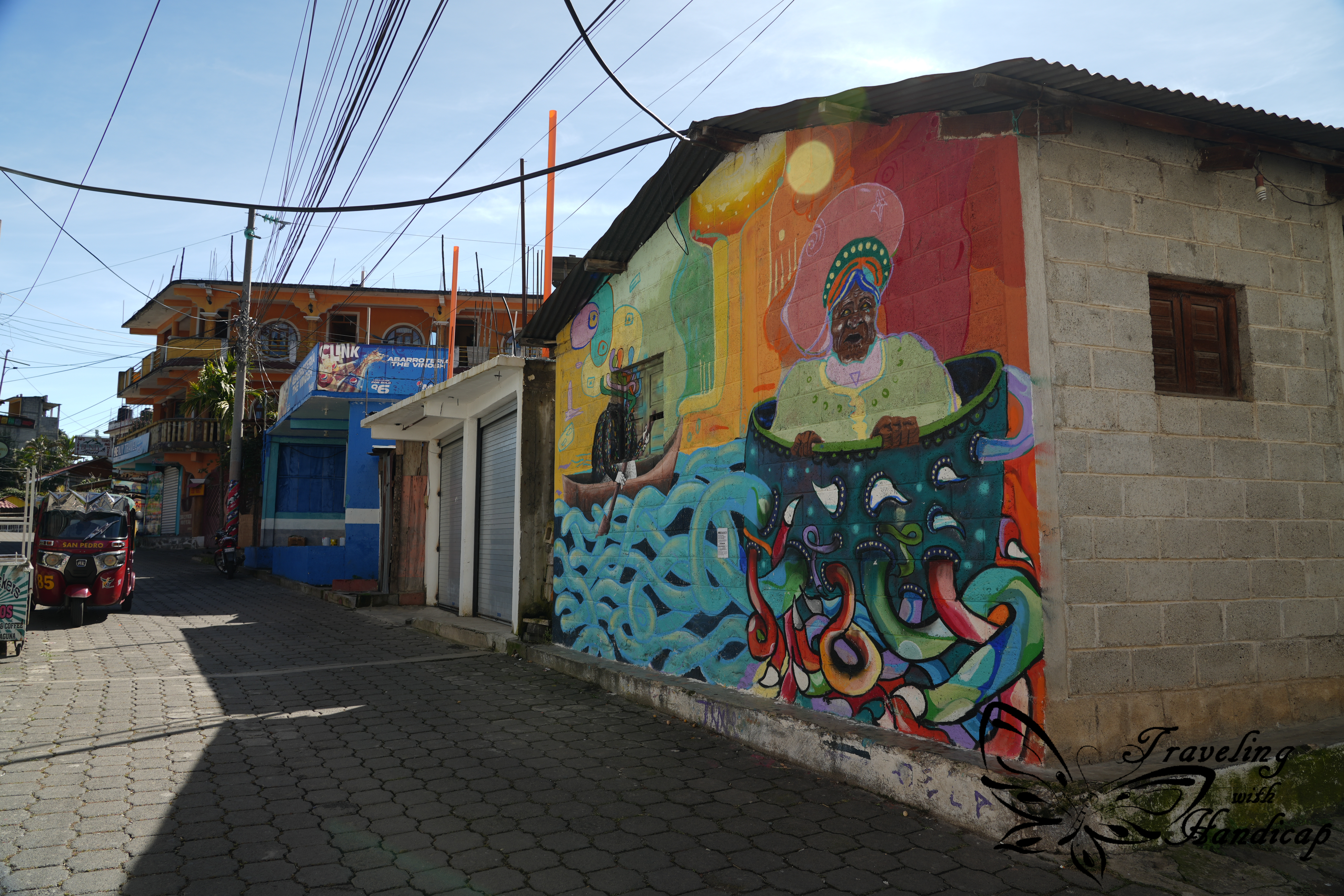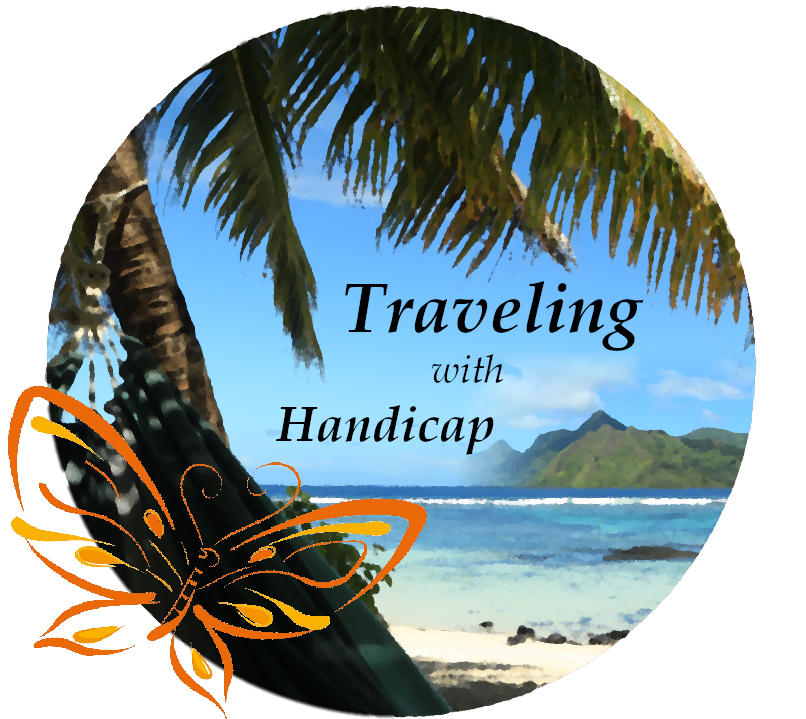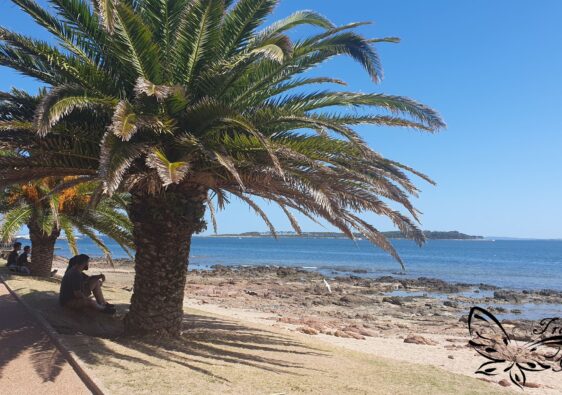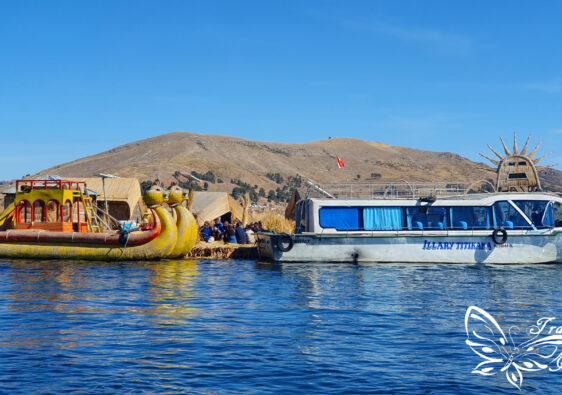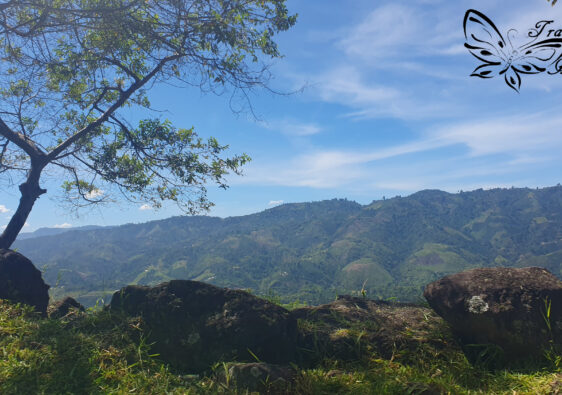Everyone is the age of their heart
Guatemalan proverb
Lake Atitlán – Lancha experience
How to get around in the Lake Atitlán area? Of course, on a boat (“lancha” in Spanish). Taking such a lancha is quite an experience on its own! Firstly, you need to ask locals for the price, as the captains would charge you more if you ask them for the price. There are different companies operating lanchas across the lake, they might have different rates and some companies charge tourists more than locals.
Honestly, it is quite difficult to enter and leave such a boat. The docks are more or less stable, maybe also a little slippery as partly covered with water. There is no flat entrance, you have to somehow get in and out of this “can”. This is why I doubt that people with accessibility issues may take lanchas. Sure, there are tourist tours with boats that offer a flat entry, however, they are more expensive and do not offer regular services between different villages. This is why a taxi might be the better option in this case, even though it will take much longer.


As soon as I have set up my YouTube account and managed to edit my videos, I will share one on my lancha trips on lake Atitlán.
Villages at the shore of Lago Atitlán
There are multiple villages across the lake, along the shoreline, which are accessible through lancha rides. I have not visited all of them, however, I present you those places which I’ve checked out. I went there on a lancha or by catching a TukTuk.
- San Pedro La Laguna (where I studied Spanish at Orbita)
- San Juan La Laguna
- San Pablo La Laguna
- San Marcos La Laguna
- Santa Cruz La Laguna
- Panajachel (the only “city”)
- Santa Catarina Palopó
- San Antonio Palopó
- San Lucas Toliman
- Santiago Atitlan
San Juan La Laguna
San Juan feels less touristy in terms of the presence of hotels and hostels than San Pedro. However, there are two famous streets, the Calle de los Sombreros and the Calle de las Sombrillas, which are quite famous and nice to check out. There is a big arts scene in San Juan, if you consider buying souvenirs from the region, you’ll find plenty.
The lancha dock of San Juan directly connects to the Calle de los Sombrillas or Calle de las Artes with plenty of cafés, restaurants, and souvenir shops. Many tourists seem to be one-day visitors, accessing San Juan on a lancha. I took a TukTuk as it was cheaper if you’re coming from San Pedro, the village in the direct neighborhood of San Juan. It’s definitely worth strolling through the streets of San Juan. In my impression, the streets of San Juan were in a better condition than those of San Pedro, so getting around on an electric wheelchair (with certain power for the incline) is possible.

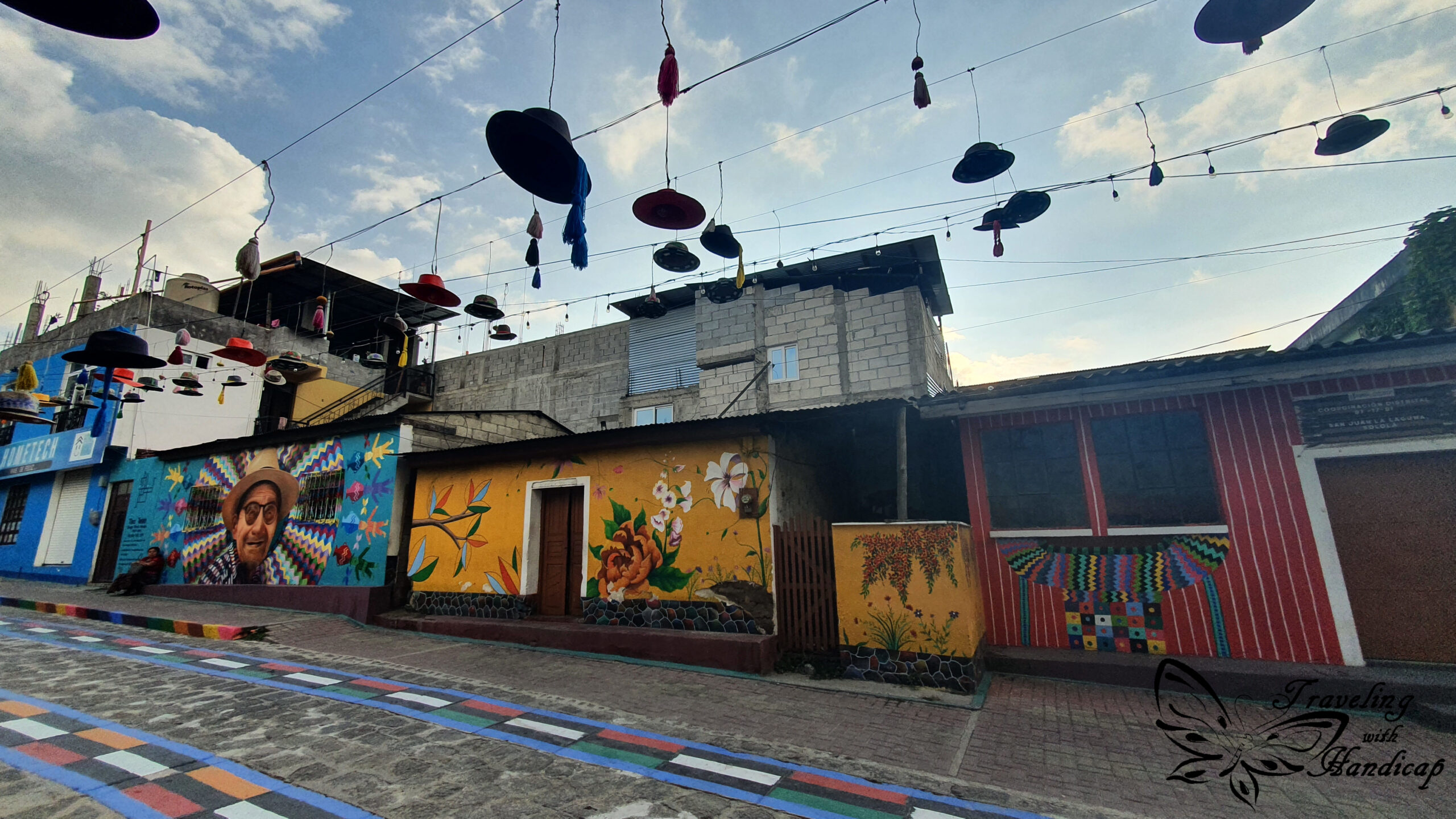
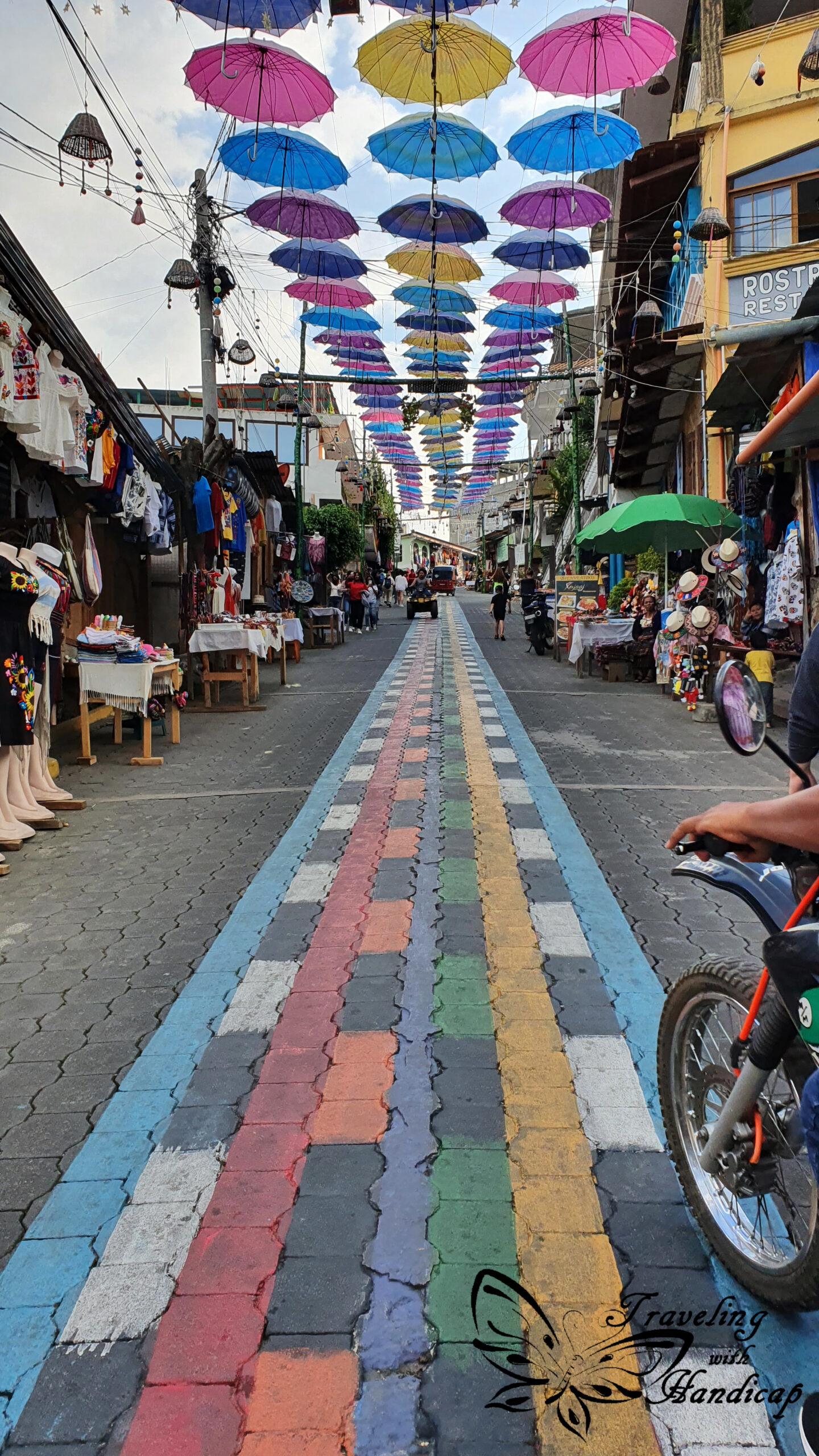
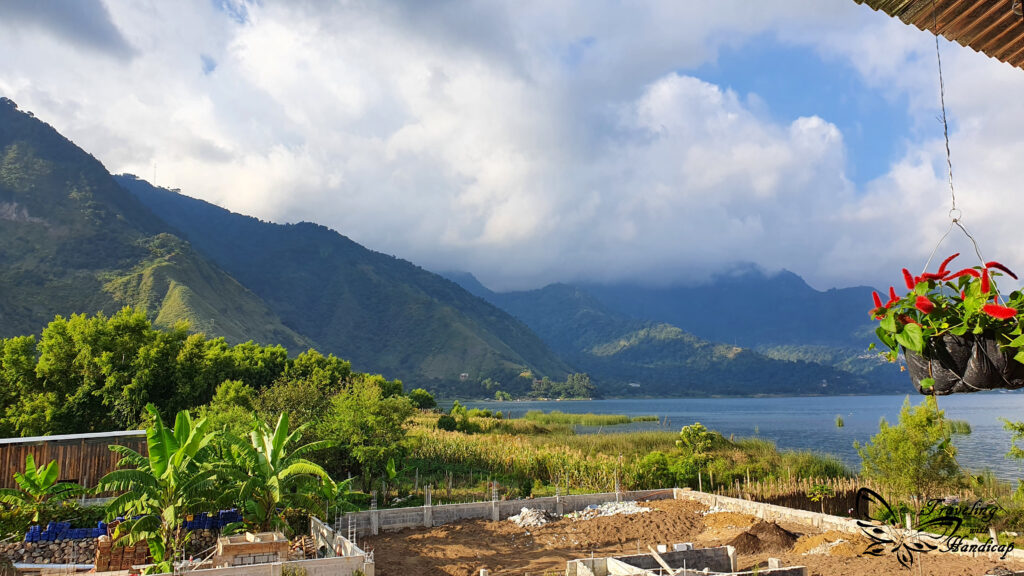
San Marcos La Laguna
San Marcos is the true hippie village at the lake. It’s comparatively tiny and best accessible from a lancha. If you are into multi-week yoga experiences and similar, this is the perfect place for you to check out. However, the village itself is quite tiny, so if you stay there for longer, you might feel the urge to check out other villages at the lake. 😉
There is a famous cliff at San Marcos from which you can jump into the lake. Quite tempting to try out. However, I visited San Marcos during the last week of rain season, and so I spent more time in a café with a roof than in the water. During rainy season, the showers are insanely intense. You better bring a waterproof jacket, shoes and backpack-cover. The majority of rain showers pour down during the afternoon and evening, the mornings are quite calm. So if you consider checking out the area, plan to do your trips during the (early) morning hours and study or sleep during the afternoons. I caught the last week of rain season and the first week of dry season by the end of October.

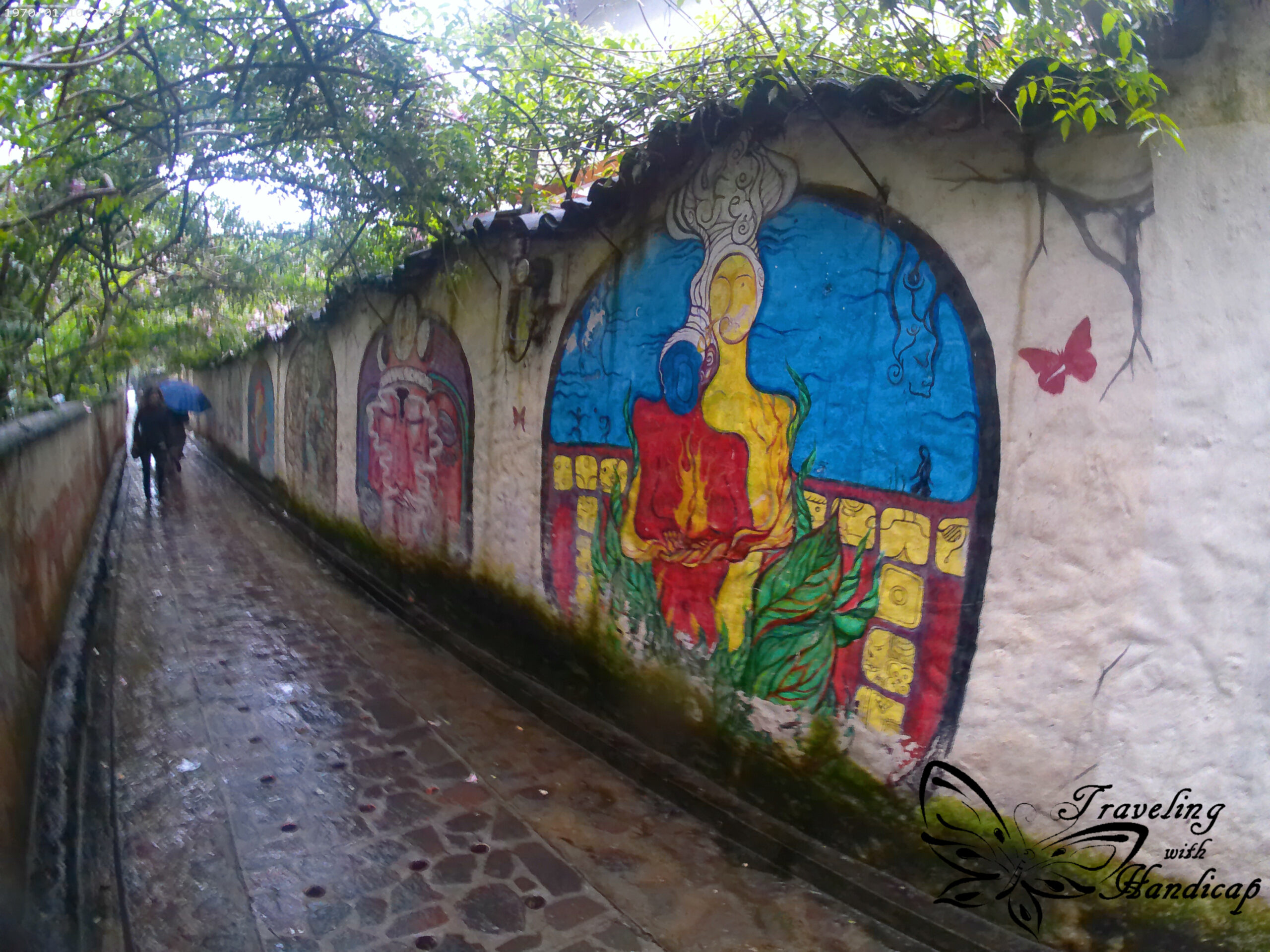
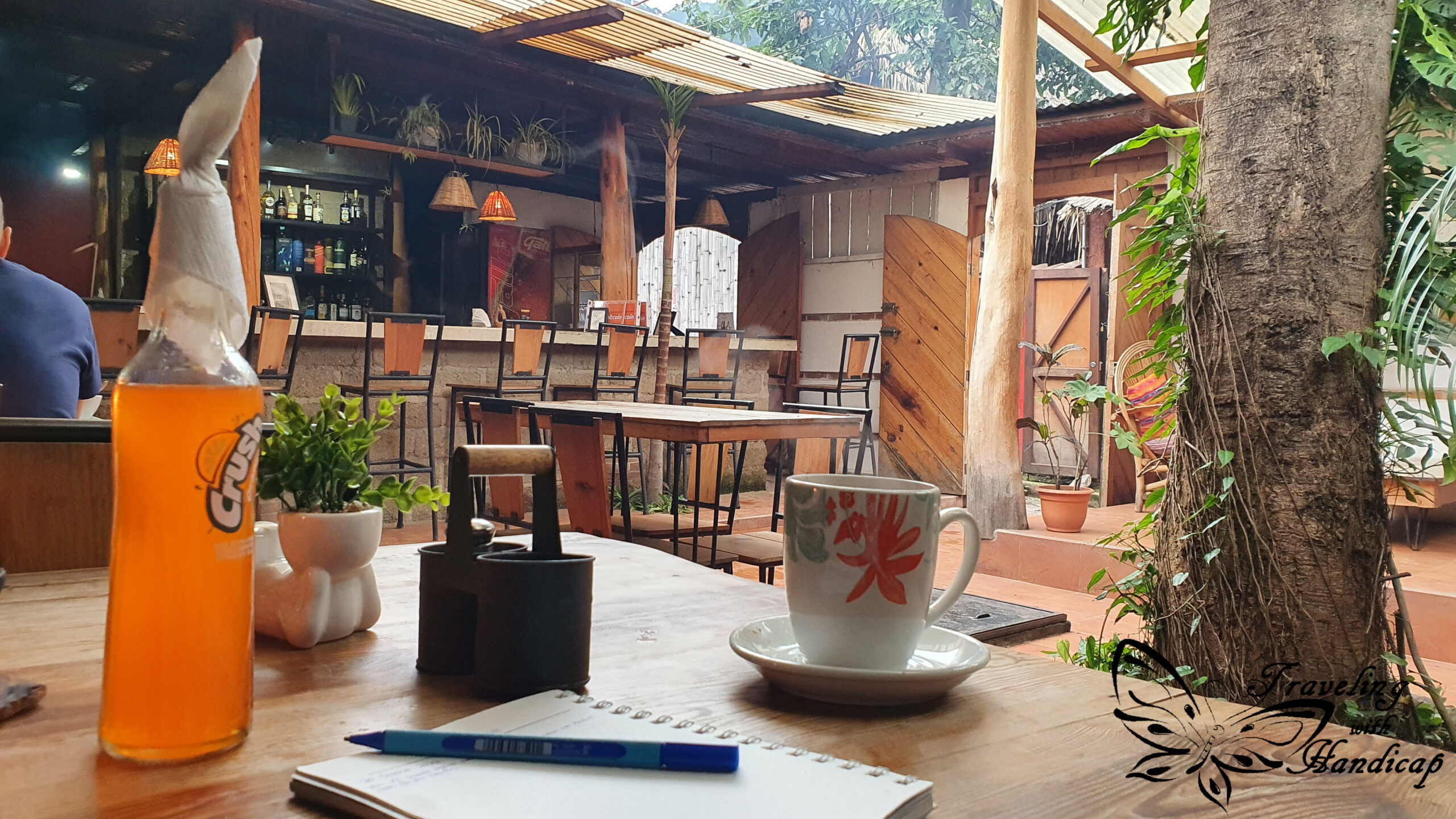
Panajachel
Panajachel is the only city at the lake, all other places are rather tiny villages. While in San Pedro, the people greet you whenever you pass by, it’s comparatively anonymous within Panajachel. It feels quite similar to the villages in lower Bavaria compared to Munich. The streets of Panajachel are broader, as such, there are much more fancy SUVs driving around (compared to mostly TukTuks within San Pedro La Laguna). Moreover, Panajachel is not built on any steep hill, so it’s quite convenient to walk around.
When entering Panajachel through lancha docks, I immediately realized the wheelchair walkway. True, it is much easier to get around Panajachel on a wheelchair compared to the other villages built on the mountains. However, many restaurants or houses are not really accessible, so this requires some deeper research.
There is a huge market close to the shoreline where locals try to sell you anything. I only walked through and watched stuff, because everything I buy is another thing to carry around. I didn’t recognize any specific sights made for tourists. So I preferred strolling along the streets and checking out restaurants or bars.
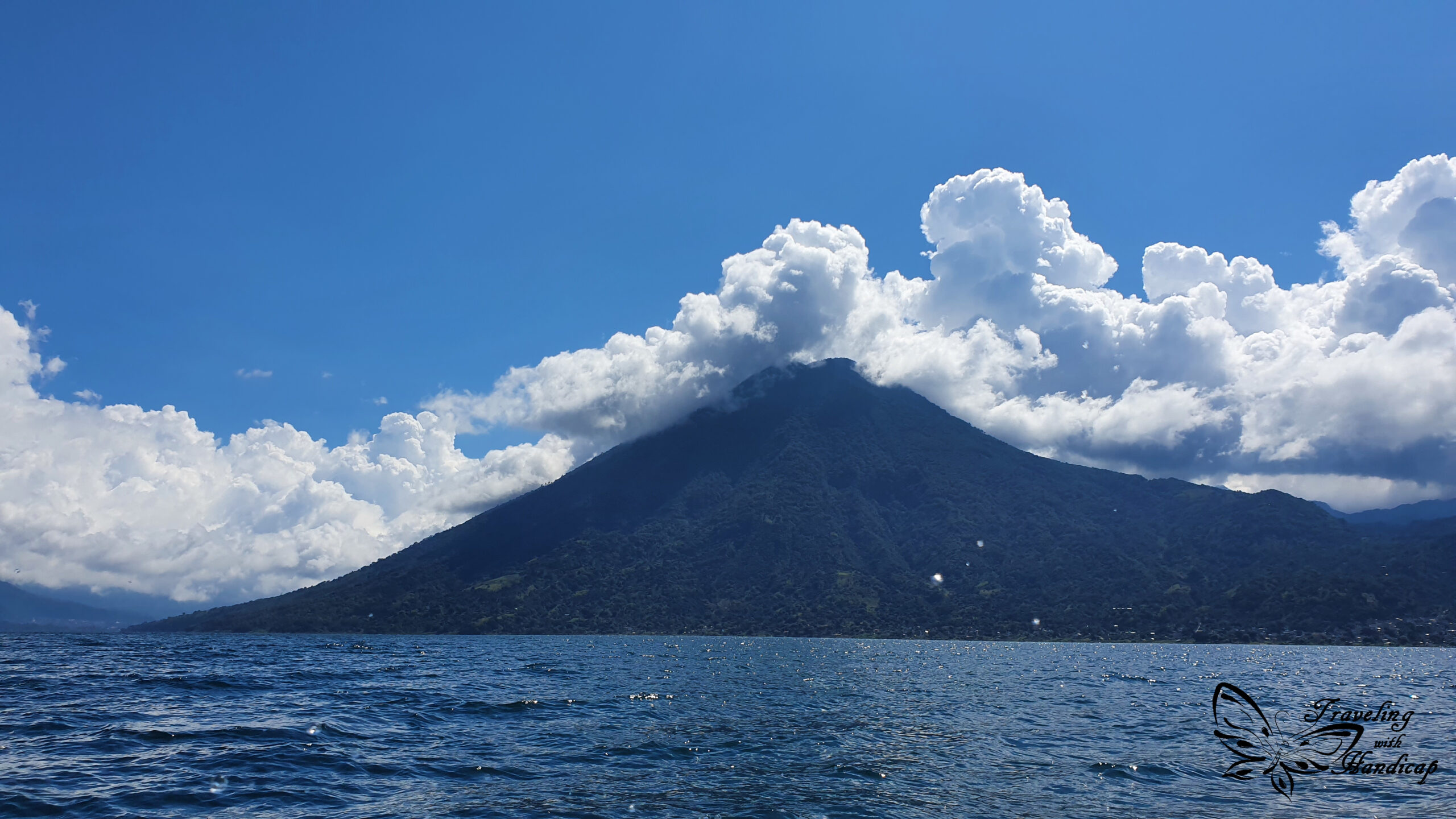






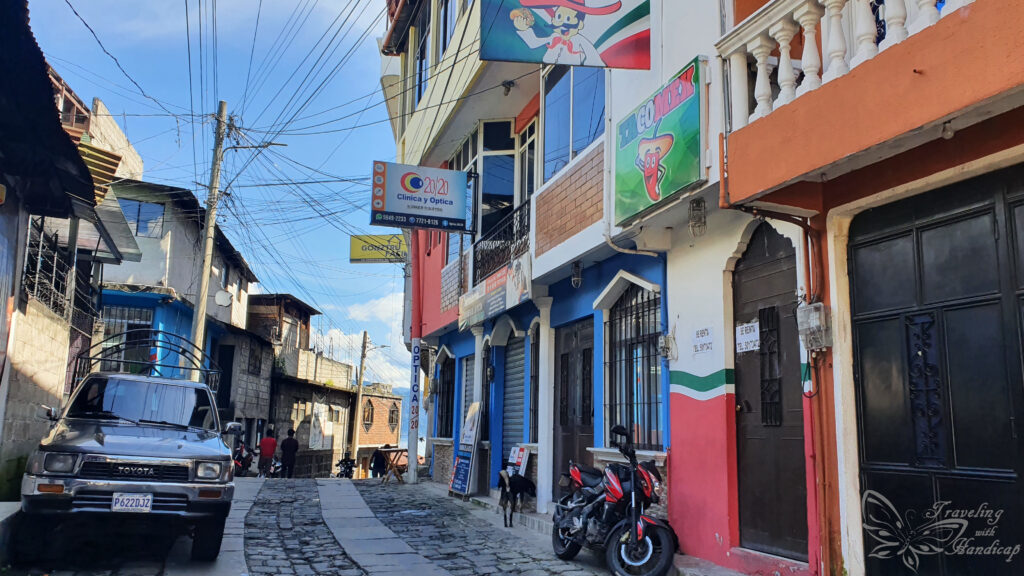

Further great experiences at Lake Atitlán
The Indian Nose at Sunrise
One very famous natural sight at the Lake Atitlán is the Indian Nose. That’s a formation of mountain tops which look a bit like a face looking to the sky with the nose as the highest point. You have an amazing view from that “nose tip”, so it’s definitely worth checking out.
The best time to visit that place is for the sunrise, as the sun rises at the opposite end of the lake. Moreover, the sky is comparatively clear during morning hours (getting cloudy and maybe even rainy during the afternoon). Plenty of tour agencies offer trips to that spot. Ask some of them for their prices, since they might differ among companies.
The tour started with a pick-up at 4am, a drive to the entrance of the walkway. From that spot, it took approximately half an hour to climb to the nose. Keep in mind that it’s still dark when you climb up, so bring a torch. Some parts of the hike are steep and uneven stairs, so any form of light is much appreciated. I got help from other guys whenever the stairs were too steep for me.
The view during sunrise was truly amazing. Moreover, we got coffee provided and had a breathtaking time. Really impressing, I don’t want to spend too many words on it, the pics are convincing enough. 😉

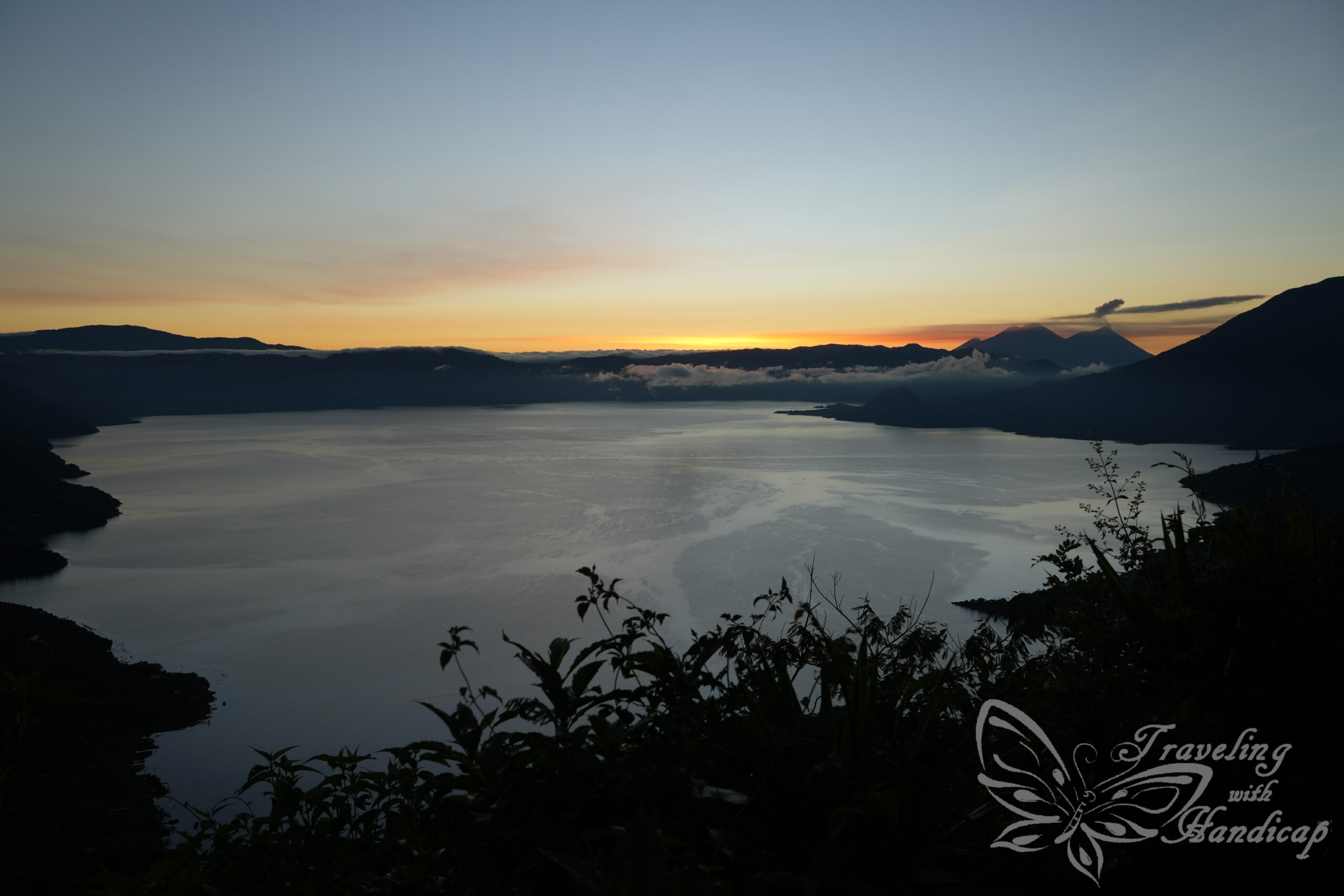
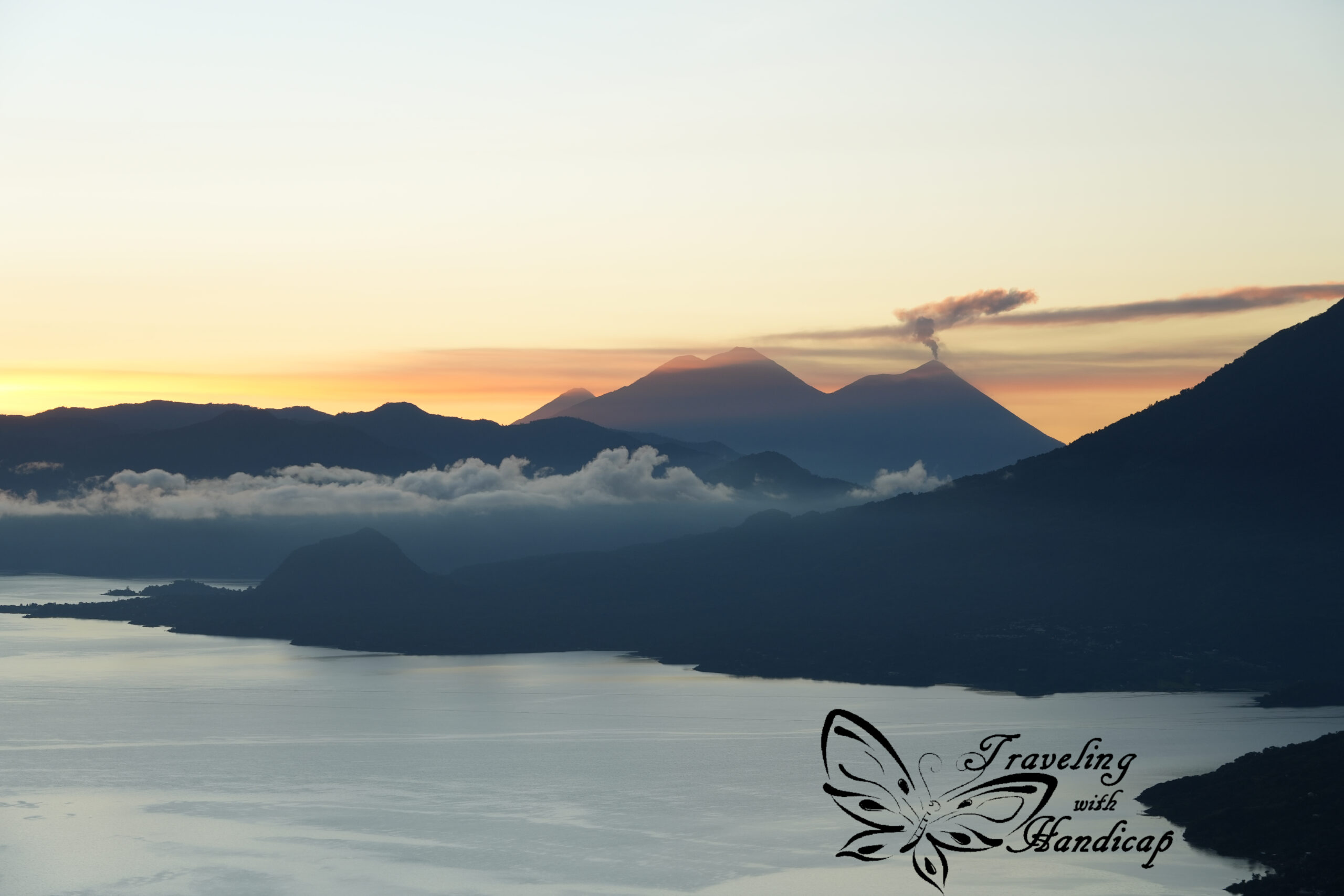
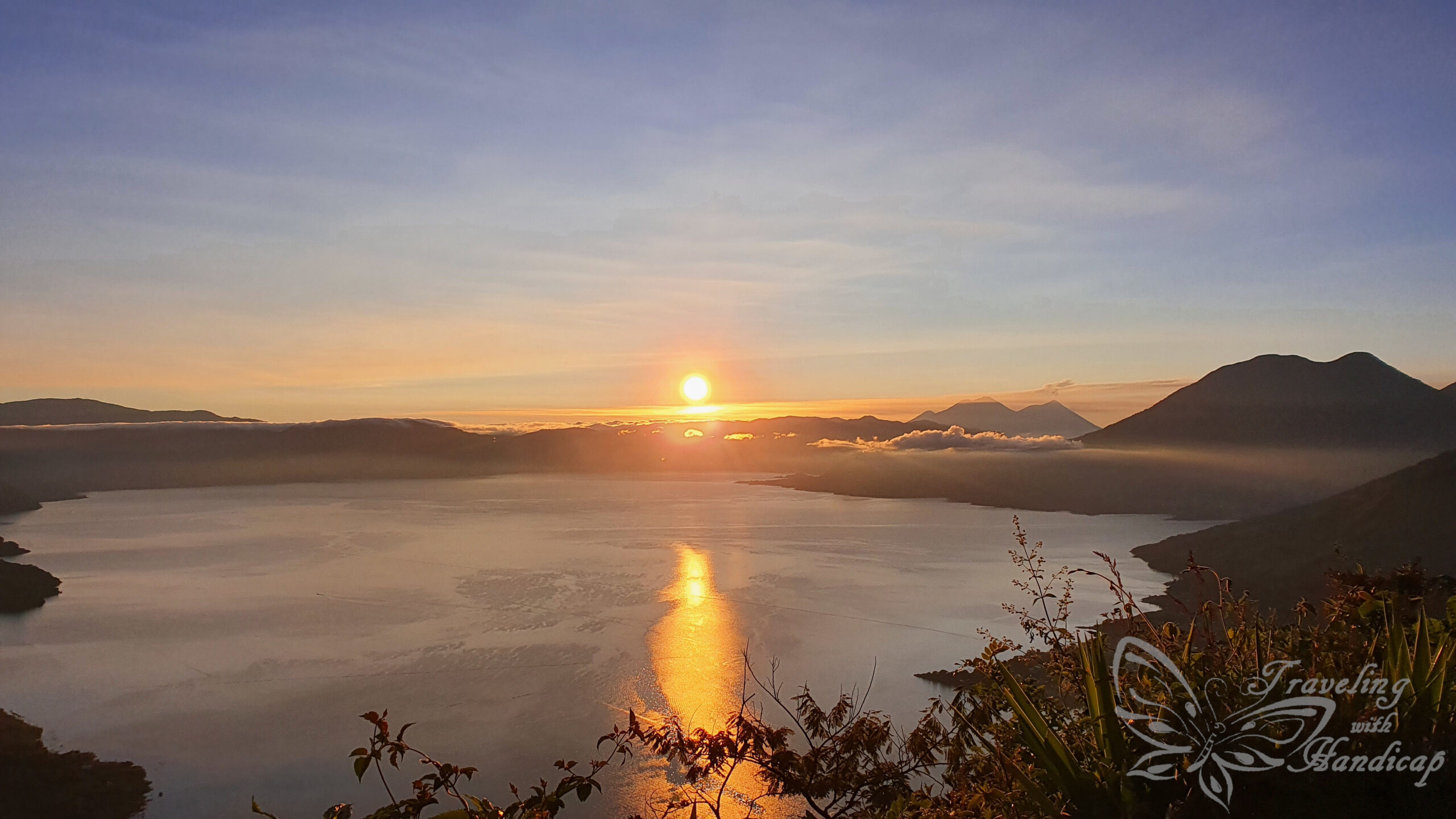
Miradores
There are plenty of miradores (viewpoints) next to or above villages around the lake. These miradores might be painted beautifully and might offer stunning views. However, you need to pay for each mirador, to enter it. As I went to the most incredible mirador, the Indian Nose, I skipped all other miradores.
Local Art
No matter where you go around the Lago Atitlán, there is an arts scene in all the villages. Many houses are not only painted in color but, moreover, with stunning images. These drawings either represent the purpose of the house or refer to any other traditional sign. I recognized many drawings which refer to Mayan traditions. There are plenty of different Mayan languages spoken, Tz’utujil in the region around San Pedro and even another one across the lake, in Panajachel. The Mayan languages differ from each other, so they are foreign languages for people.




